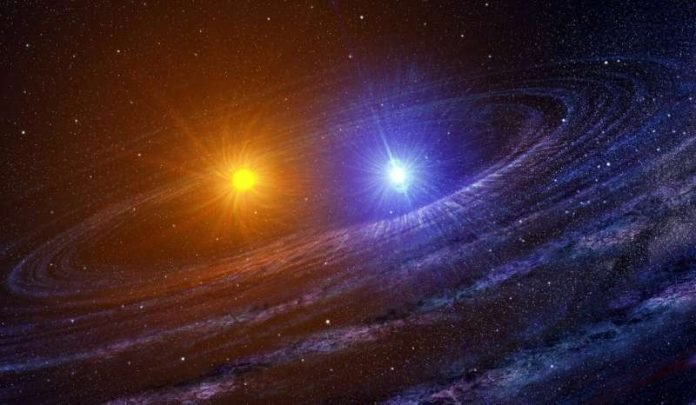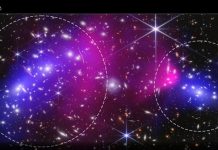
Blue supergiants, some of the most magnificent and radiant stars in the cosmos, have long puzzled astronomers.
Despite their prominence in the night sky, the origins of these hot, bright stars have remained a subject of debate.
However, recent research led by the Instituto de Astrofísica de Canarias (IAC) is shedding light on this stellar mystery, suggesting a fascinating origin story that involves cosmic mergers.
These stars are not just any stars; they are B-type blue supergiants, at least 10,000 times more luminous and 2 to 5 times hotter than our Sun, and their masses range from 16 to 40 times that of the Sun.
Their brilliant blue hue and immense brightness make them stand out in the galaxy.
Given their characteristics, you’d expect these stars to be a rare sight due to their rapid phase of evolution.
Yet, astronomers observe them more frequently than predicted, sparking curiosity about their true nature.
The key to unraveling this enigma lies in the peculiar observation that most blue supergiants appear to be solitary wanderers in the vast expanse of the universe, despite most massive stars being born with at least one companion star in a binary system.
This discrepancy led researchers to propose a groundbreaking theory: the majority of blue supergiants are the product of a celestial dance that ends in the merger of two stars.
The research team, including computational and observational astrophysicists from around the globe, embarked on a journey to simulate the complex process of stellar mergers.
They meticulously modeled the fusion of giant stars with their smaller companions, factoring in the intricacies of their interaction and the mixing of stellar material during the merger.
Their simulations revealed that the aftermath of such mergers are stars that live out their days as blue supergiants, burning helium at their core through the second longest phase of their stellar lifecycle.
This breakthrough provides an explanation for the presence of blue supergiants in what is known as the “evolutionary gap” in classical stellar physics, a phase where stars are not typically expected to exist.
The findings are backed by analyses of 59 early B-type blue supergiants in the Large Magellanic Cloud, a satellite galaxy of the Milky Way, which further support the merger hypothesis.
What’s more, the study demonstrates that stars born from these cosmic unions more accurately reflect the observed surface composition of blue supergiants, including enhanced levels of nitrogen and helium, than traditional stellar models.
This insight is crucial, as it suggests that mergers play a dominant role in the creation of blue supergiants.
This research not only offers a solution to a longstanding astronomical puzzle but also highlights the significant impact of stellar mergers on the structure of galaxies and their stellar populations.
Looking ahead, the team plans to delve into the final stages of blue supergiants’ lives, exploring how they explode and their contributions to the cosmic tapestry of black holes and neutron stars.
This study is not just a step forward in understanding blue supergiants but a leap towards unraveling the intricate dynamics of the universe itself.
The research findings can be found in The Astrophysical Journal Letters.
Copyright © 2024 Knowridge Science Report. All rights reserved.



